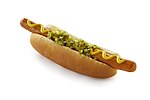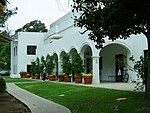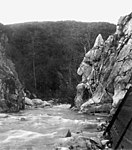Elysian Park
1886 establishments in CaliforniaEcho Park, Los AngelesElysian Park, Los AngelesParks in Los Angeles
Elysian Park is one of largest parks in Los Angeles at 600 acres (240 ha). Most of Elysian Park falls in the neighborhood of the same name, but a small portion of the park falls in Echo Park. The park was created by city ordinance on April 5, 1886. City engineer George Hansen sponsored the ordinance. The land was considered "worthless" at the time. At the time, only a few other parks existed within the Los Angeles city limits. For some time the land sat unimproved, but eventually roads, trails, and landscaping was added.Parts of Elysian Park were swapped for other lands held by the Los Angeles Dodgers when Dodger Stadium was built.
Excerpt from the Wikipedia article Elysian Park (License: CC BY-SA 3.0, Authors).Elysian Park
Arroyo Seco Parkway, Los Angeles Elysian Park
Geographical coordinates (GPS) Address Nearby Places Show on map
Geographical coordinates (GPS)
| Latitude | Longitude |
|---|---|
| N 34.083 ° | E -118.238 ° |
Address
Elysian Park
Arroyo Seco Parkway
90086 Los Angeles, Elysian Park
California, United States
Open on Google Maps









